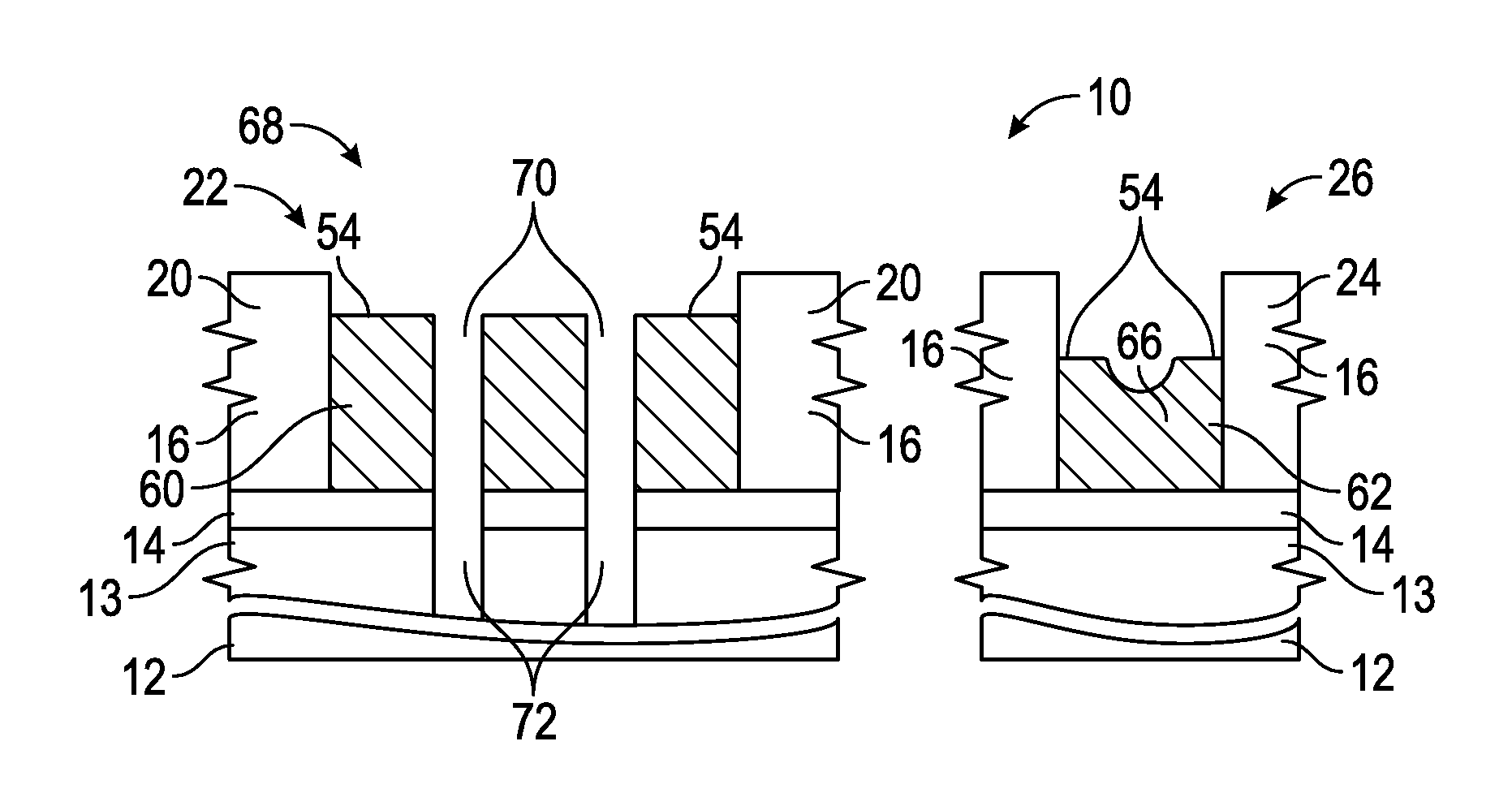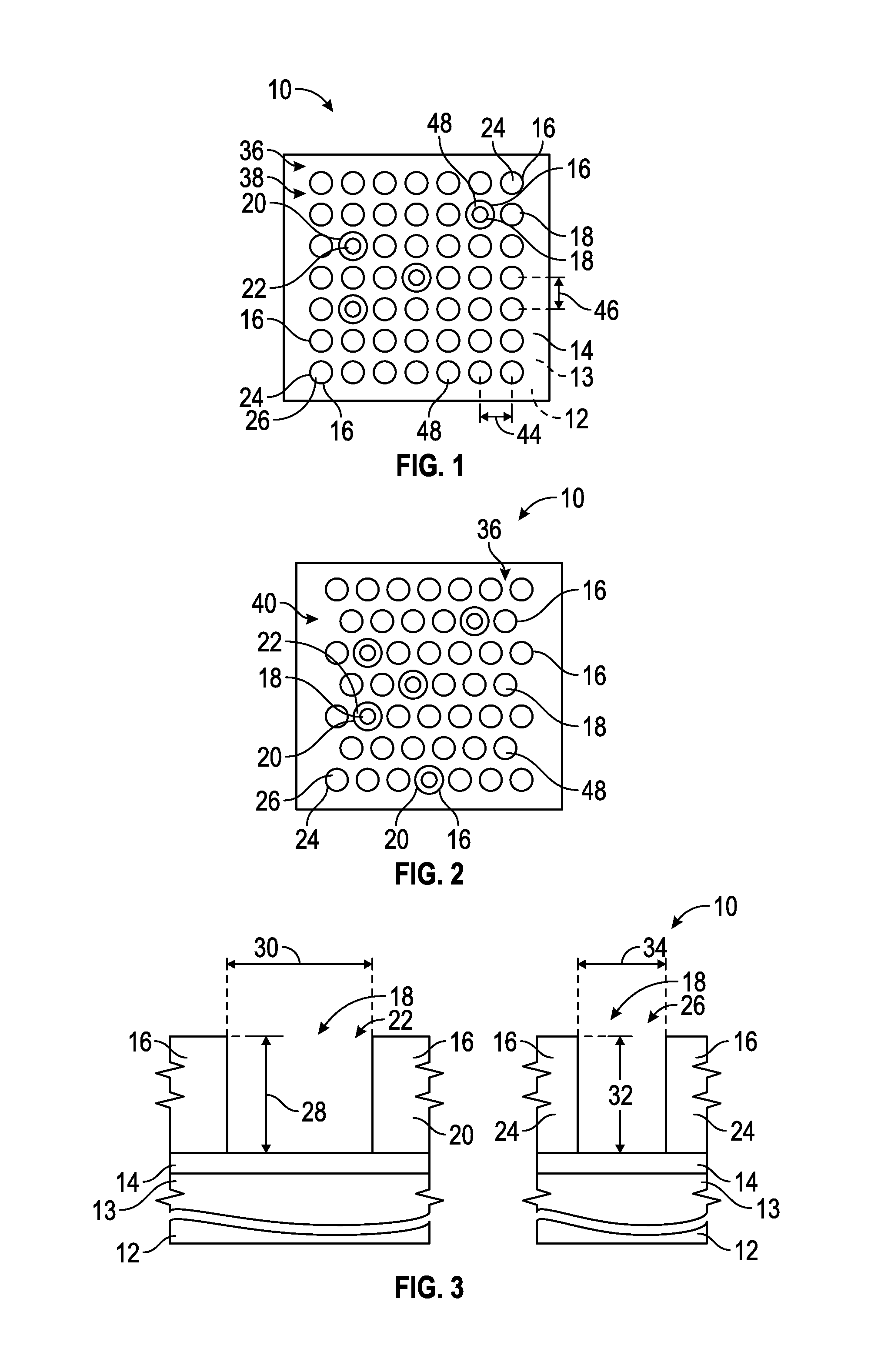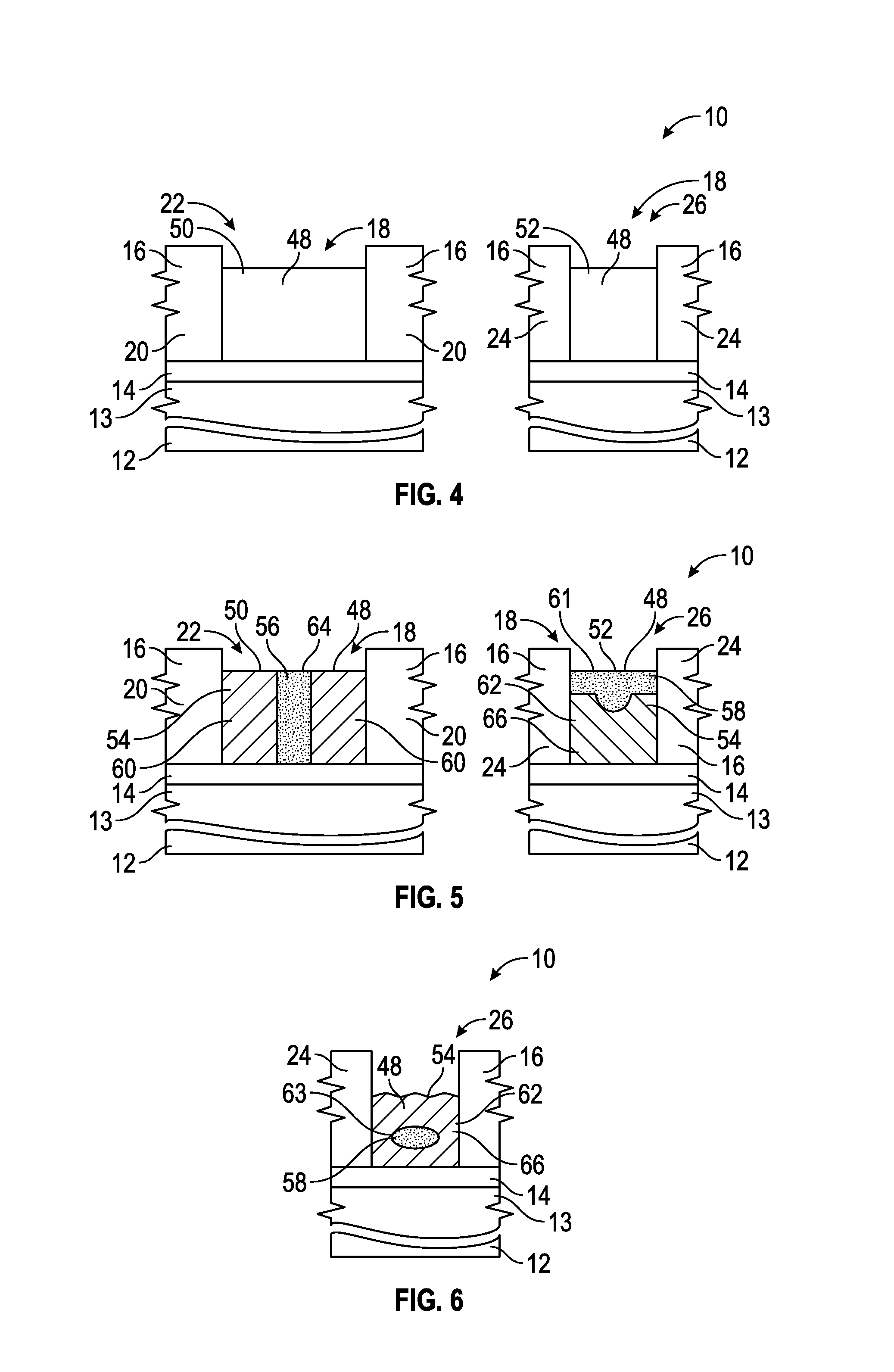Methods for fabricating integrated circuits using directed self-assembly including a substantially periodic array of topographical features that includes etch resistant topographical features for transferability control
- Summary
- Abstract
- Description
- Claims
- Application Information
AI Technical Summary
Benefits of technology
Problems solved by technology
Method used
Image
Examples
example
[0048]FIG. 15 is an example of computational simulations for determining the dimensions of topographical features and corresponding confinement wells in accordance with an exemplary embodiment. The example is provided for illustration purposes only and is not meant to limit the various embodiments in any way.
[0049]To simulate graphoepitaxy DSA patterns, a masking method referenced in Exploration of the Directed Self-Assembly Based Nano-Fabrication Design Space Using Computational Simulations by Azat Latypov et al., which is incorporated herein in its entirety, is used to model confinement of block copolymers in a three-dimensional simulation domain. The BCP used for the simulation was PS-b-PMMA with a volume fraction of a PS phase of f=0.7, a degree of polymerization of N=663, and an unperturbed radius of gyration of Rg=10 nm. The depth of the confinement wells 18a-h was set to 50 nm and the widths of the confinement wells 18a-h were varied from 55 to 90 nm. As illustrated, the conf...
PUM
 Login to view more
Login to view more Abstract
Description
Claims
Application Information
 Login to view more
Login to view more - R&D Engineer
- R&D Manager
- IP Professional
- Industry Leading Data Capabilities
- Powerful AI technology
- Patent DNA Extraction
Browse by: Latest US Patents, China's latest patents, Technical Efficacy Thesaurus, Application Domain, Technology Topic.
© 2024 PatSnap. All rights reserved.Legal|Privacy policy|Modern Slavery Act Transparency Statement|Sitemap



